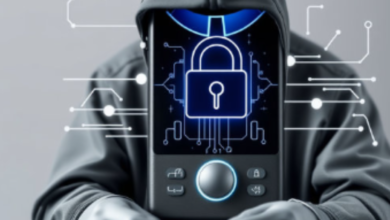Hooray! Detect Malware and Protect Your Precious Data: A Fun and Easy Guide! (Focuses on data protection and simplicity)

Hey there, digital defenders! Are you ready to become a malware-crushing superhero? In today’s world, our precious data lives online – photos, documents, secrets, everything! And let’s face it, malware is the ultimate digital villain, trying to steal, corrupt, or hold our data hostage. But fear not! With the right knowledge and some awesome modern tools, you can detect malware like a pro and keep your data safe and sound. This fun and easy guide will walk you through everything you need to know, so get ready to unleash your inner cyber security expert! Let’s dive in!
Wahoo! Detect Malware: Understanding the Sneaky Culprits!
Okay, first things first, we need to understand our enemy! What exactly is malware? Think of it as any software designed to do bad things to your computer or steal your information. It’s a broad term that covers a whole bunch of nasty programs. Learning to detect malware starts with understanding its various forms. Why is this important? Because different types of malware act differently, and knowing what you’re dealing with is the first step to effective removal. Think of it like a doctor diagnosing an illness – you need to know what’s wrong before you can prescribe the right cure. So, let’s explore the sneaky culprits lurking in the digital shadows!
Malware can spread in many ways. Sometimes it hides in seemingly innocent email attachments, disguised as important documents or funny pictures. Other times, it lurks on dodgy websites, waiting for you to accidentally click on a malicious link. Even downloading software from untrusted sources can be a risky game. That’s why it’s crucial to be vigilant and aware of the potential dangers lurking online. Detect malware early is key to minimizing the damage it can cause. Remember, a little caution goes a long way in the world of cyber security! We’ll talk more about safe browsing habits later, but for now, let’s focus on recognizing the different types of malware you might encounter. From annoying adware that bombards you with pop-ups to sophisticated spyware that secretly steals your personal information, the world of malware is vast and ever-evolving. But don’t worry, we’ll break it down for you!
Yikes! Detect Malware: Spotting Ransomware and Spyware!
Now, let’s talk about two particularly nasty types of malware: ransomware and spyware. These guys are serious business and can cause significant damage if they manage to sneak onto your system. Learning to detect malware like ransomware and spyware is crucial for protecting your data and your privacy.
Ransomware is like the digital equivalent of a hostage situation. It encrypts your files, making them completely inaccessible, and then demands a ransom (usually money) in exchange for the decryption key. Imagine all your precious photos, documents, and videos suddenly locked away – it’s a nightmare scenario! Detect malware like ransomware early can prevent this catastrophe. Look out for suspicious emails, especially those with attachments you weren’t expecting. Be wary of clicking on links in emails or on websites you don’t trust. And, of course, always back up your data regularly! This is your best defense against ransomware. If your files are backed up, you can simply wipe your system and restore your data without having to pay the ransom.
Spyware, on the other hand, is more like a sneaky spy lurking in the shadows. It secretly monitors your online activity, collects your personal information, and sends it back to the cybercriminals who created it. This can include your passwords, banking details, browsing history, and even your keystrokes. Detect malware like spyware can be tricky because it often operates in the background without your knowledge. However, there are some telltale signs to watch out for, such as a slow computer, unexpected pop-ups, or changes in your browser settings. If you suspect your computer might be infected with spyware, it’s essential to run a scan with a reputable anti-malware program as soon as possible.
Whoa! Detect Malware: Zapping Viruses and Worms!
Next up, we have viruses and worms. These are two classic types of malware that have been around for a while, but they’re still a threat today. Learning to detect malware like viruses and worms is a fundamental part of cyber security.
Viruses are like digital parasites. They attach themselves to other files and spread by replicating themselves. When you run an infected file, the virus activates and can cause all sorts of problems, from deleting files to crashing your system. Detect malware like viruses by being careful about the files you download and run. Avoid opening attachments from unknown senders and be cautious about downloading software from untrusted sources. Keep your antivirus software up to date and run regular scans to catch any viruses that might have slipped through the cracks.
Worms are similar to viruses in that they can replicate themselves, but they don’t need to attach themselves to other files to spread. They can travel across networks, infecting any vulnerable computer they encounter. This makes them particularly dangerous because they can spread rapidly and cause widespread damage. Detect malware like worms by having a strong firewall and keeping your operating system and software patched. These updates often include security fixes that can protect you from worm attacks.
Yahoo! Detect Malware: Crushing Trojans and Rootkits!
Now, let’s talk about two more sophisticated types of malware: Trojans and rootkits. These guys are masters of disguise and can be very difficult to detect. Learning to detect malware like Trojans and rootkits requires a keen eye and some advanced tools.
Trojans are named after the famous Trojan Horse from Greek mythology. They disguise themselves as legitimate software or files, tricking you into downloading and installing them. Once they’re on your system, they can do all sorts of nasty things, from stealing your data to opening backdoors for other malware. Detect malware like Trojans by being extremely careful about the software you download. Only download software from trusted sources, such as the official websites of the software developers. Be wary of free software or pirated copies, as these are often used to distribute Trojans.
Rootkits are even more sneaky than Trojans. They’re designed to hide themselves and other malware from your operating system and security software. This makes them incredibly difficult to detect and remove. Detect malware like rootkits requires specialized tools and techniques. If you suspect your computer might be infected with a rootkit, it’s best to seek help from a professional cyber security expert.
Yay! Detect Malware: Shielding Your Data from ALL the Nasties!
So, you’ve learned about the different types of malware, how they spread, and how to detect malware. Now, let’s talk about how to protect your precious data from all these digital nasties! Prevention is always better than cure, so here are some essential tips for keeping your system safe and sound.
- Keep your software up to date: Software updates often include security patches that fix vulnerabilities that malware can exploit.
- Use a strong antivirus and anti-malware program: These programs can detect and remove malware before it can cause damage. Make sure to keep them up to date and run regular scans.
- Be careful about what you click: Avoid clicking on links in emails or on websites you don’t trust. Be wary of pop-ups and suspicious downloads.
- Back up your data regularly: This is your best defense against ransomware and other data-destroying malware. If your files are backed up, you can always restore them even if your system is infected.
- Use a strong firewall: A firewall can help block unauthorized access to your computer.
- Practice safe browsing habits: Avoid visiting dodgy websites and be careful about what information you share online.
Congratulations, you’ve made it to the end of our malware-busting adventure! You’re now equipped with the knowledge and tools you need to detect malware like a pro and protect your precious data. Remember, cyber security is an ongoing process. New threats are constantly emerging, so it’s important to stay informed and keep your defenses up to date. By following the tips in this guide and using the modern tools available, you can create a digital fortress around your data and keep those pesky malware villains at bay. So go forth, be vigilant, and keep your digital world safe and happy! Hooray for data protection!


